The 4-season motorcycle jacket
Published on: 29 August 2024
CLICK KLIM FOUR-SEASON LAYERING SYSTEM TO SHOP WITH FREE UK NEXT DAY DELIVERY
As with most things in life, everything in motorcycling is a compromise. And so when it comes to riding the bike, everyone has to decide what’s most important to them.
Buy a sportsbike, for example, and everyone will think you're an exciting and dangerous individual. But you'll scare yourself half to death, get back ache, and accrue speeding fines as though they’re going out of fashion. You will never be able to properly see what's behind you. And you'll have to master the art of trying to look cool whilst walking about in a leather suit that causes you to stoop like the hunchback of Notre Dame.
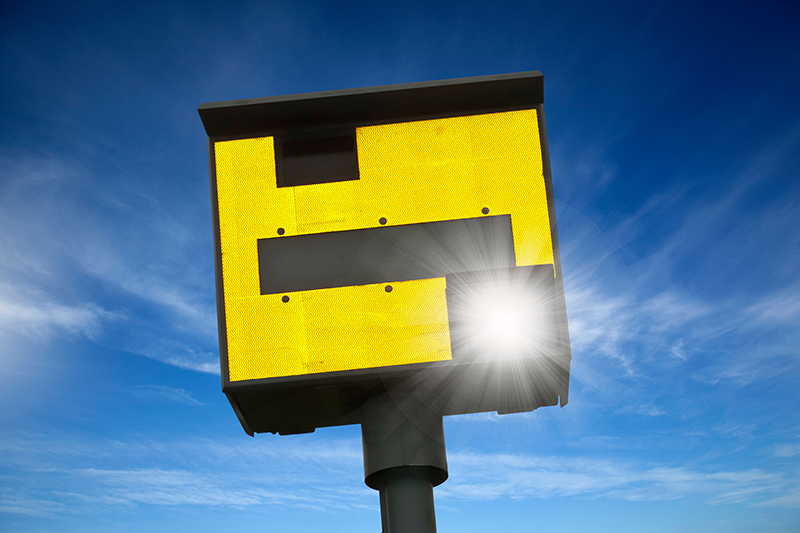
Buy a GS, and you'll be able to cover miles effortlessly. You can traverse continents in the blink of an eye. People will think you've got an adventurous spirit. But however much you spend on your bike, it will always look like every other GS in the car park. Nobody will stop and take a photo of it. And if you drop your bike, you'll have to hope there are some strong people nearby who can help you pick it up.
Get a Harley, and you'll buy in to an interesting community of new friends, most of whom of course are accountants and lawyers. You’ll look super badass with that leather waistcoat. You’ll always have people to ride with. But wherever you're going, you won't get there very quickly. You’ll slowly send yourself deaf. And you'll probably end up with piles!
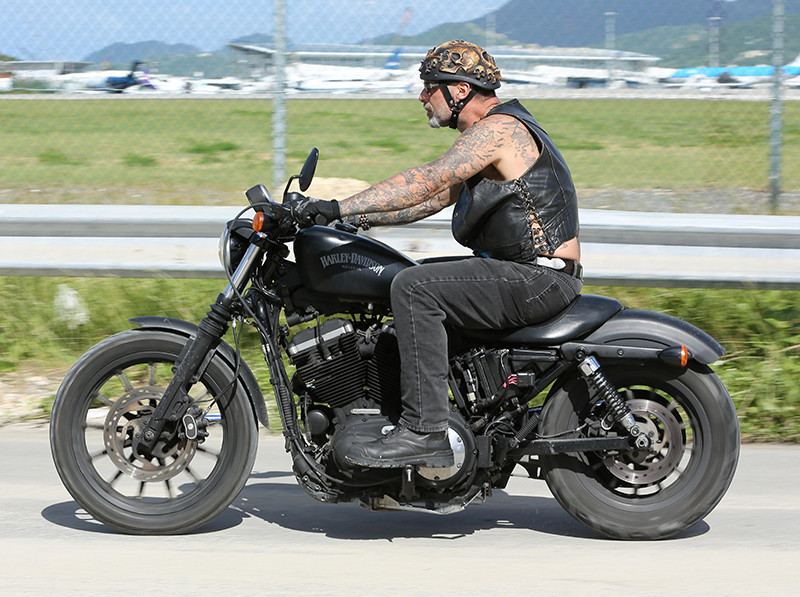
And so it is with motorcycle clothing. You will have to decide what trade-offs are acceptable to you. Now, historically, the clothing manufacturers have often tried to convince motorcyclists that they could provide them with the outfit that would work in every conceivable climatic condition. The suit that does everything.
Of course, this does not exist, but many years ago it was to this end that some of the more entrepreneurial apparel producers came up with the idea of fitting a waterproof membrane into a motorcycle jacket, (and pant too of course). The idea here was that instead of having to stop at the side of the road to don your 'one-piece waterproof’, you could ride your bike in all weathers; come rain or come shine. And given what had gone before, there was some truth to this. It was a step in the right direction.
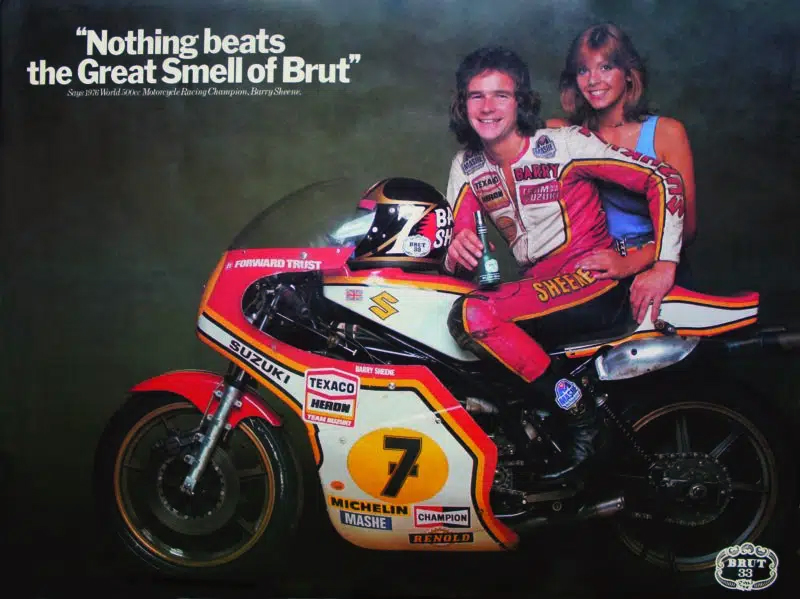
But what nobody told you, and indeed what nobody really understood back then, was that your waterproof clothing would be horribly sweaty when the sun came out.
In truth, back in the day, bikers were tougher than we are today. They were less concerned about suffering such ignominies. If you got hot, you got a bit pongy. Personal hygiene wasn't what it is today. Until Barry Sheene came along, exhorting us to splash it all over, nobody really cared what they smelled like. It wasn't a big deal. Most bikers simply accepted the problems with waterproof clothing, because there weren't many more palatable options.
But the truth was that these early attempts at waterproof motorcycle gear weren't always a great success. The membranes weren't particularly breathable, so you got as wet from the inside as you did from the outside. And nobody put much effort into the taping of membranes, so most so-called waterproof jackets weren’t actually particularly waterproof in the first place.
Over time, waterproof gear became much more reliable. Okay, so it could still be a little sweaty, but membranes did become more breathable, and the manufacturers learned how to stop the rain seeping into garments through the seams.
And then, aboot 20 years or so ago, along came laminated membranes. These seemed to solve some of the issues that bedevilled the more traditional, drop-liner construction of most waterproof gear. It made wetting out, that condition where a jacket or pant becomes totally waterlogged, a less regular occurrence.
And, in a way, that's where we still are today.
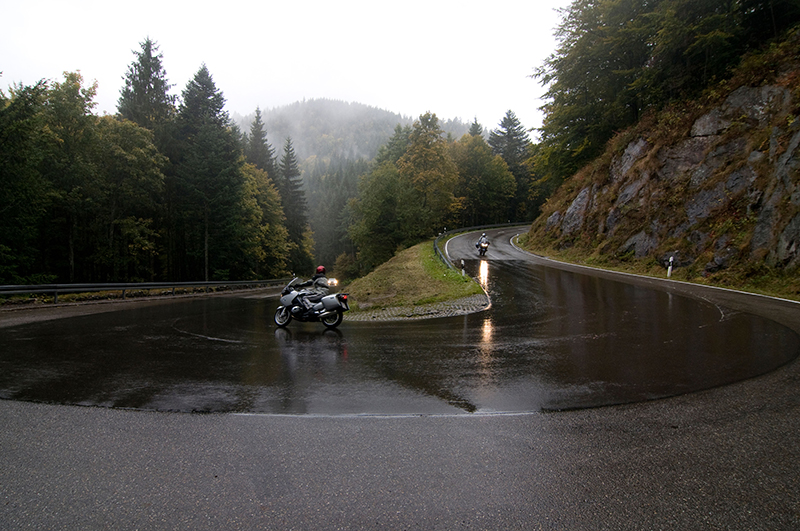
The very top end of the motorcycle clothing market is dominated by gear whose waterproofing qualities come from a laminated membrane; the very best and most reliable of which, from people like Klim, Rukka and Stadler, are equipped with a membrane from Gore.
And it is true that, in a Gore-Tex laminated outfit, you will stand a far better chance of staying dry. But the problem with any waterproof membrane, however it is affixed to a garment, is that, when it’s warm, it will make it difficult to stay cool. And the hotter it is, or the harder you are working on the bike, the worse this problem becomes.
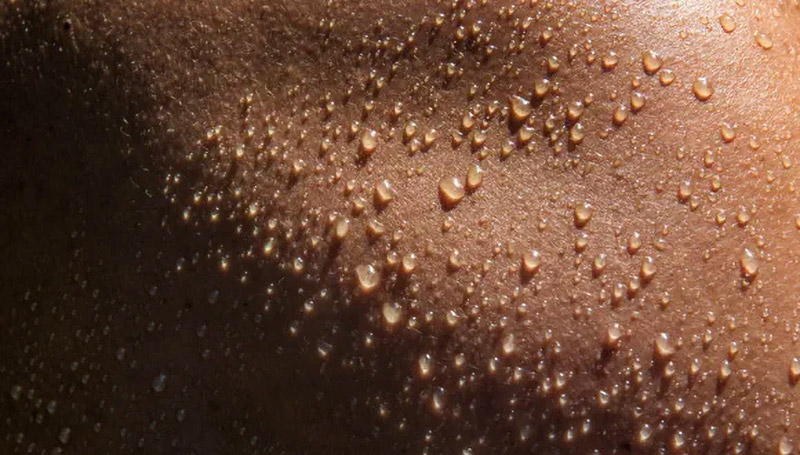
Our body needs to be able to sweat effectively if we are not to over heat. Now sweating works on the basis of what is known as 'evaporative cooling'. Sweat comes to the surface of the skin. To cool us down our sweat, in its liquid form, needs to turn into a vapour and escape into the ether. This transition in states requires heat, and this heat is drawn from the body. That's how sweating causes our bodies to cool down.
But if we are sweating profusely, any membrane will make it harder for the sweat to escape into the atmosphere. When this happens, and our sweat stays as a liquid on our skin, we will get wetter and wetter. We won't cool down; in fact we'll just get hotter.
Now nobody in the motorcycle store will tell you any of this when you’re looking for a suit and that’s partly because they simply don't understand the physics. And partly because they don’t care. In fact, in most stores, if you threaten to spend enough money, someone will probably confirm that you could indeed become the lucky owner of a four-season motorcycle jacket that will keep you comfortable all year round, and in all conditions.
Unfortunately, as we have intimated, this is nonsense. It is a myth. More pointedly, it’s a lie.
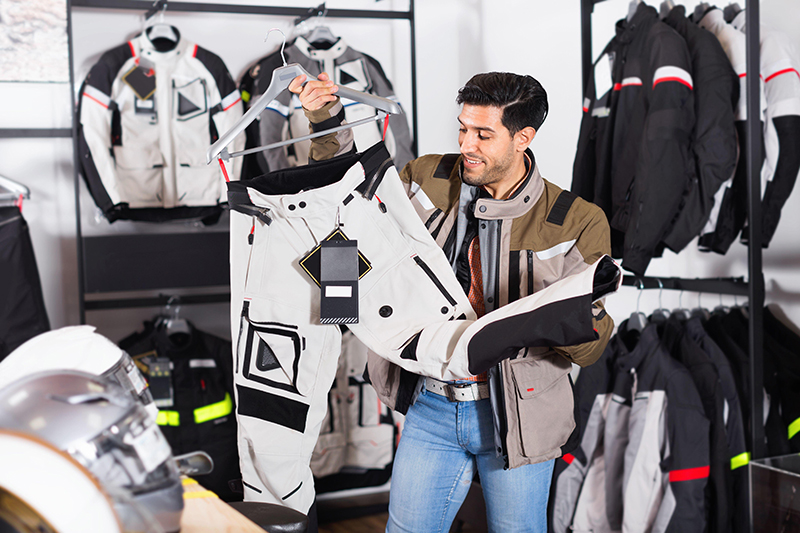
Some may try and convince you that a laminated jacket's large, direct-to-body vents will overcome concerns about breathability. Not true; even the most vented, laminated jacket will not be as breathable as one that doesn't have a membrane in the first place.
Now here in the shop we are often confronted by bikers telling us how effective the vents are on their expensive, laminated jacket. And vents can certainly help. At the right temperature, travelling at speed, on a bike without a screen, vents can be useful. But at slower speeds, when you're in town, or off-road, working your butt off climbing a steep and rocky path, your vents will often do very little.
Here's the bottom line as far as waterproof motorcycle gear is concerned. If it's wet, it's what you need. And if it's cold, it's what you need, because the membrane will also help combat the effects of wind chill. But if it's hot, or if you are somehow generating your own heat, leave the waterproof gear at home. It’s the problem; not the solution.
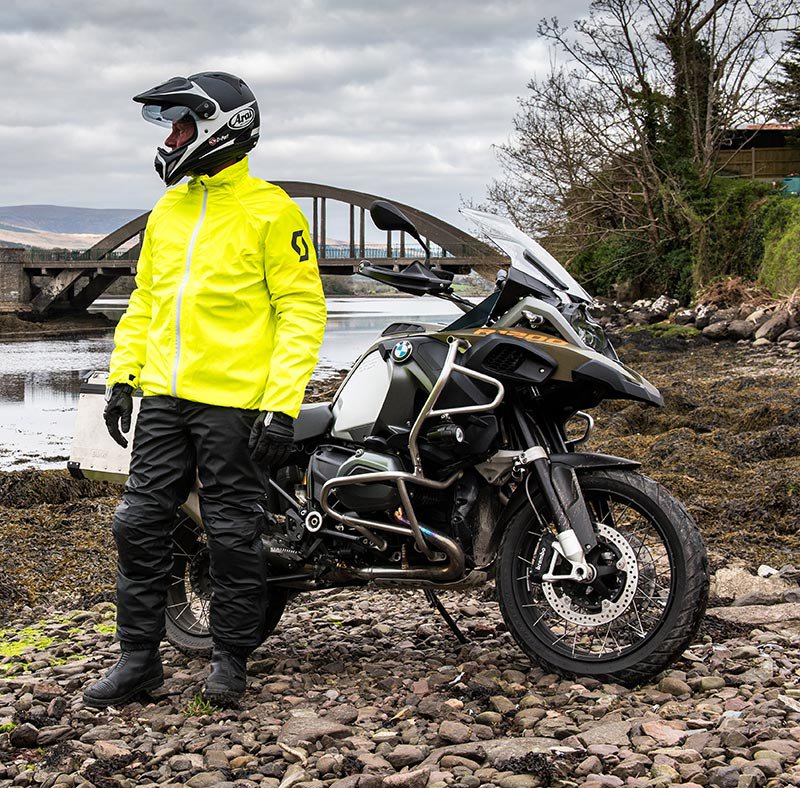
Why we need to layer
We don't choose to layer because it's the most convenient way to ride. Layering is simply about wearing the appropriate layers for the conditions. It’s about dressing the right way; not necessarily the easiest way.
And some motorcyclists just don’t get this. Especially those who have been riding for many years. There are bikers out there who just want to throw their gear on and go. And so be it. Those who have learned to live with a certain level of discomfort on the bike are often happy with the kind of gear they have always worn. But that does not mean that there isn't a more comfortable way. There is. And that way is to layer.
No soldier, no sailor, no mountaineer expects one jacket to be the perfect solution in every situation in which they find themselves.
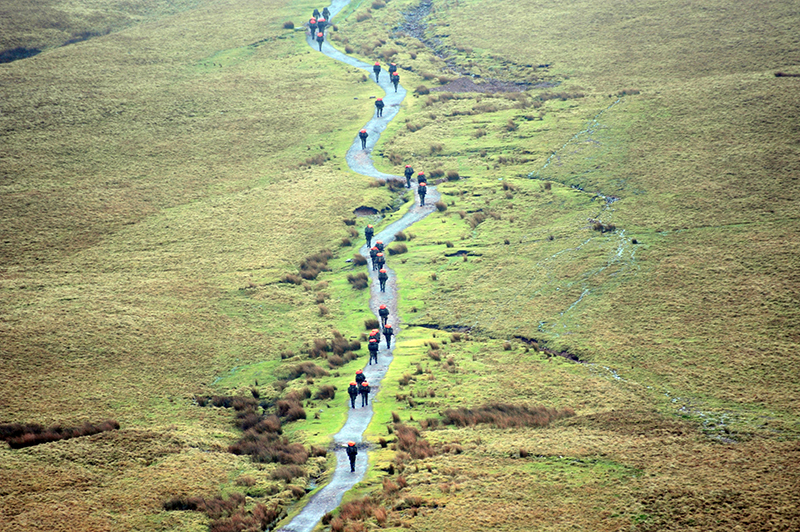
If you're on Selection for the SAS, and facing a 64 km march across the Brecon Beacons, you don't put on a wooly jumper as you set off, just in case it might get a bit chilly later. If you're a sailor, you don't put on your waterproof jacket if you're becalmed in the Doldrums, in the belief that there could be rougher weather headed your way. The same goes when you're scaling Everest. You'll wear what's right for the prevailing conditions, even though that will mean stopping when you probably don’t want to, to put things on, or take them off.
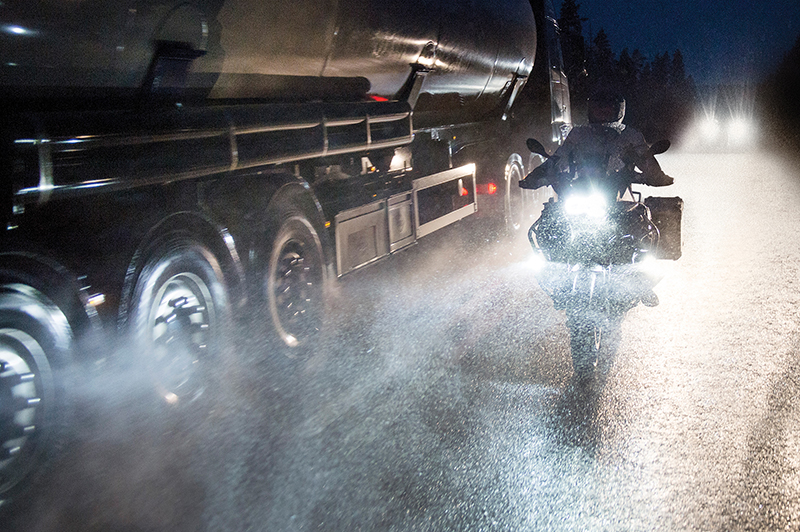
Layering for the bike is no different to layering for any other kind of extreme activity. And motorcycling can indeed be an extreme activity. When you're riding in 35 degrees, and the oncoming air is providing no relief, you need to ensure you don't become consumed by heat exhaustion. And there aren't that many activities where you might find yourself totally exposed whilst confronting an oncoming rain storm at 70 miles an hour. You can also get extremely cold on a bike. It's zero degrees out, and you're doing sixty miles an hour. Your body will feel that as minus eleven, because of what is known as the 'wind chill' effect. And that’s pretty extreme too.
Motorcyclists often underestimate the severity of the conditions they might encounter on the bike. But they do so at their peril. To ride safely, you always need to be comfortable on the bike. And the only way to always be so is to adopt a layering approach.
How to layer on the bike
The implication of what we have been discussing is that, if you are going to get hot somewhere or somehow, you don't want to be wearing a jacket, or trouser, with a waterproof membrane.
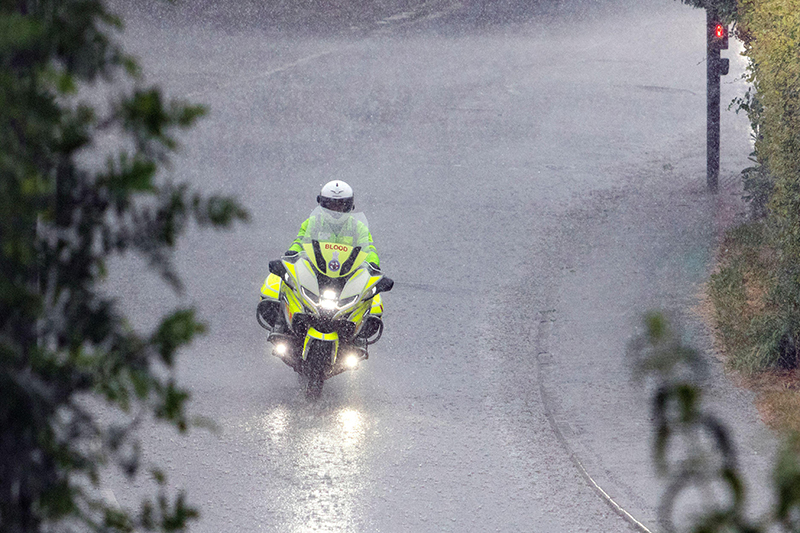
Now let me be clear; I am not saying that there isn't a place for waterproof, motorcycle gear. If you ride all year round. If you commute in the winter, or live somewhere exposed, like Wales, or Scotland, or Ireland, your waterproof gear may end up being your best friend.
But for the casual rider who tends to prefer going for a ride in nicer weather, for the person who likes to head south in search of the sun, and for the person who likes nothing more than working up a sweat in the gnarly stuff, a waterproof outfit is not the best solution.
For the purposes of demonstrating how layering can work on the bike, I am going to start with the protective, outer jacket, and then work my way in; and then out again.
Because we think it's one of the best options when it comes to layering, I am going to be using the Klim Marrakesh as the basis for this exploration. And one of the reasons we like the Marrakesh is that the outer fabric is so stretchy; and this allows the jacket to easily accomodate layers.
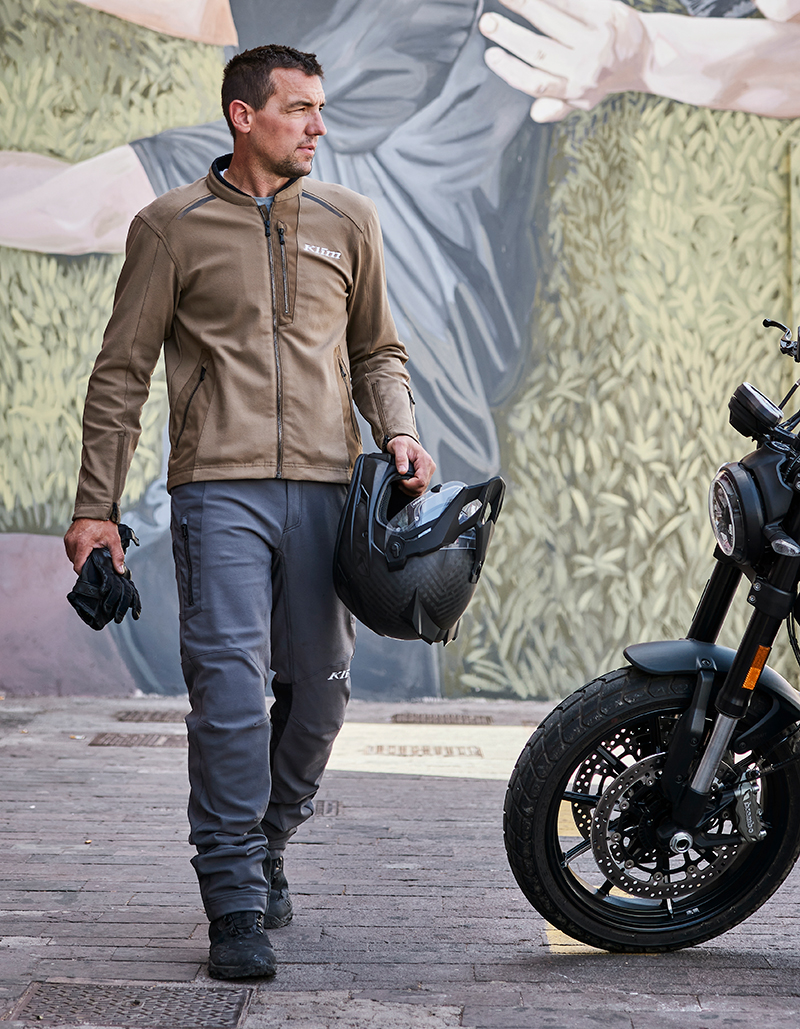
As the starting point for layering on the motorcycle, therefore, the Marrakesh is, in our view, unbeatable. As it flows air through every panel, it is one of the most breathable jackets out there. Yet it is still rated AA under EN17092 for abrasion resistance, and comes with a full suite of Level 1, D3O Ghost.
When you’re riding anywhere hot, we reckon this is potentially the perfect jacket. I suppose we're talking about any temperature above 20 degrees. We all perceive temperature differently, but on what most of us would consider to be a warm day, a Marrakesh over a lightweight, (125 g/m2), Merino base layer would give you the last word in breathability. You will be able to sweat in order to stay cool. Whilst the oncoming air will have some kind of further cooling effect on your body.
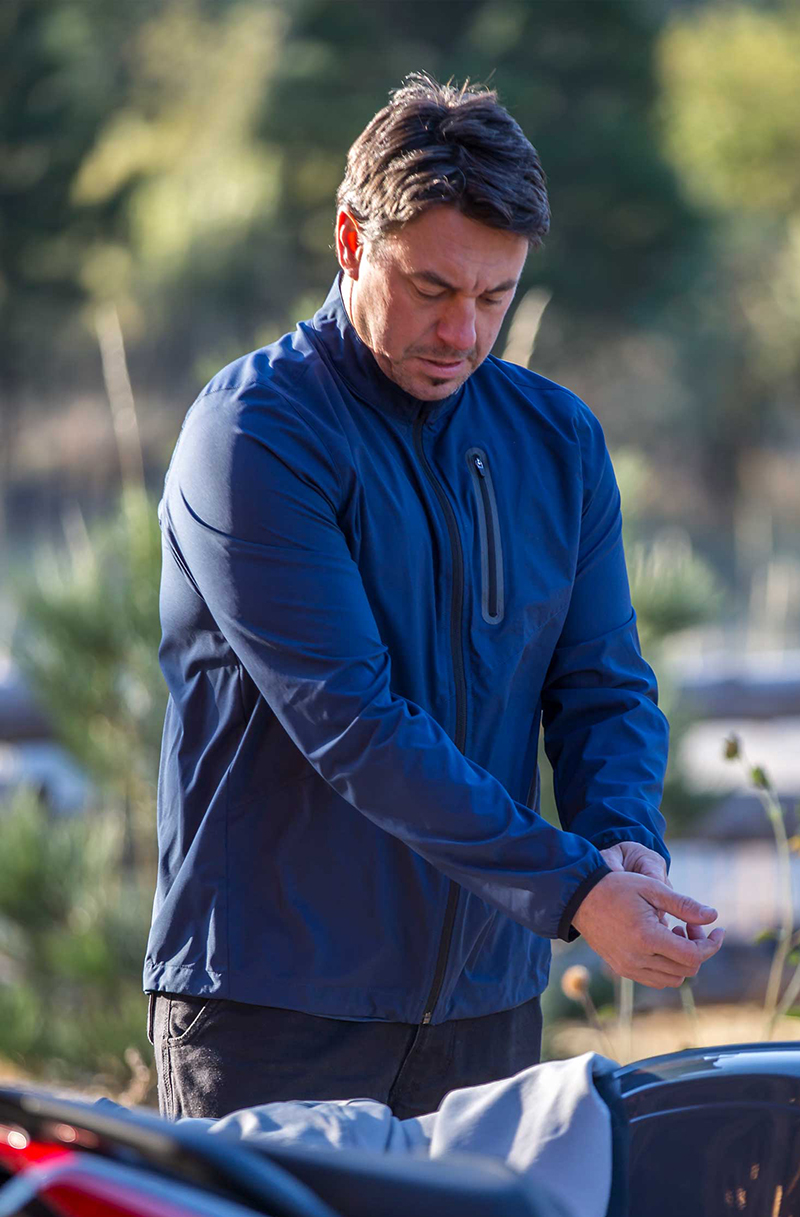
Between 15 and 20 degrees, when things are a bit cooler, you would benefit from the wearing of something like Klim’s excellent Zephyr jacket. This gossamer thin garment is basically a windproof layer. Given how insubstantial it feels, it is actually amazingly effective. It will serve to help prevent the escape of what body heat is being generated; and it will help combat the windchill effect of the oncoming air.
So with these two components, you are covered in temperatures of 30 plus, down to those in, say, the higher teens.
But when the temperature drops further, you are going to need something more robust; something that is more effective at insulating body heat. Now there are lots of ways of doing this. That could be a heavier weight of Merino. A fleece will work. So will any kind of layer containing a hollow-form fibre, like Primaloft or Thinsulate. But in recent years we have come to favour down-filled jackets.
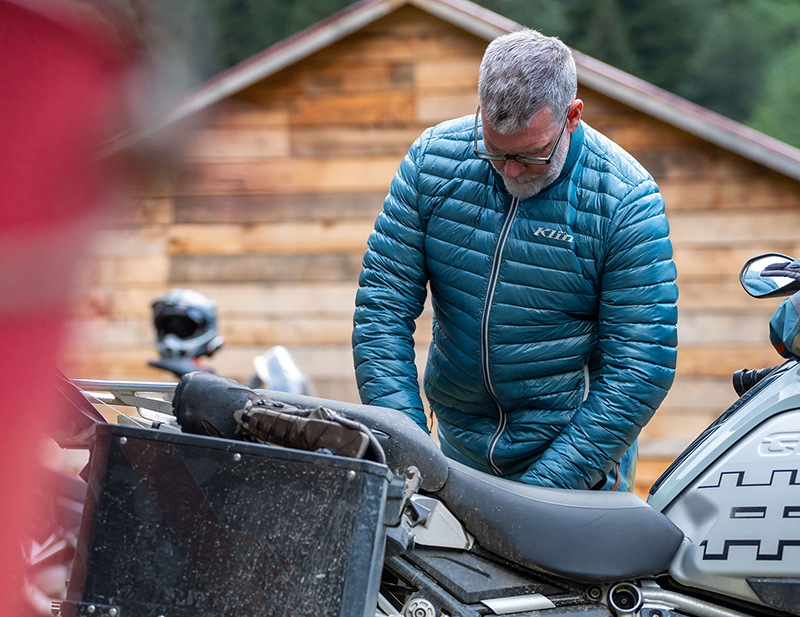
There are lots of down jackets around. You can pick one up from Uniqlo for fifty quid, but you would be fooling yourself if you thought it would be very effective on the bike. Our favourite one right now is Klim's Maverick jacket. With an 800 fill-power rating, its 90% duck down to 10% duck feather construction will keep you really warm on even the coldest of days, yet it is not overly bulky. Down jackets compress nicely when worn under a protective layer. And, of course, a down jacket is very wearable off the bike.
As I have already suggested, we all feel the heat differently, but with the Maverick and the Zephyr most people will find higher, single-figure temperatures bearable. Some of the guys here feel comfortable down to five degrees when riding with these layers; but I would hasten to add that I am not one one of them!
At those kinds of temperatures, I would be thinking about heated gear. Heated clothing actually works really well under a breathable jacket. You get warm, but you won’t get sweaty. But with a Warm and Safe jacket beneath something like a Marrakesh you could ride with this system down to temperatures that are as low as you would ever feel safe riding in.
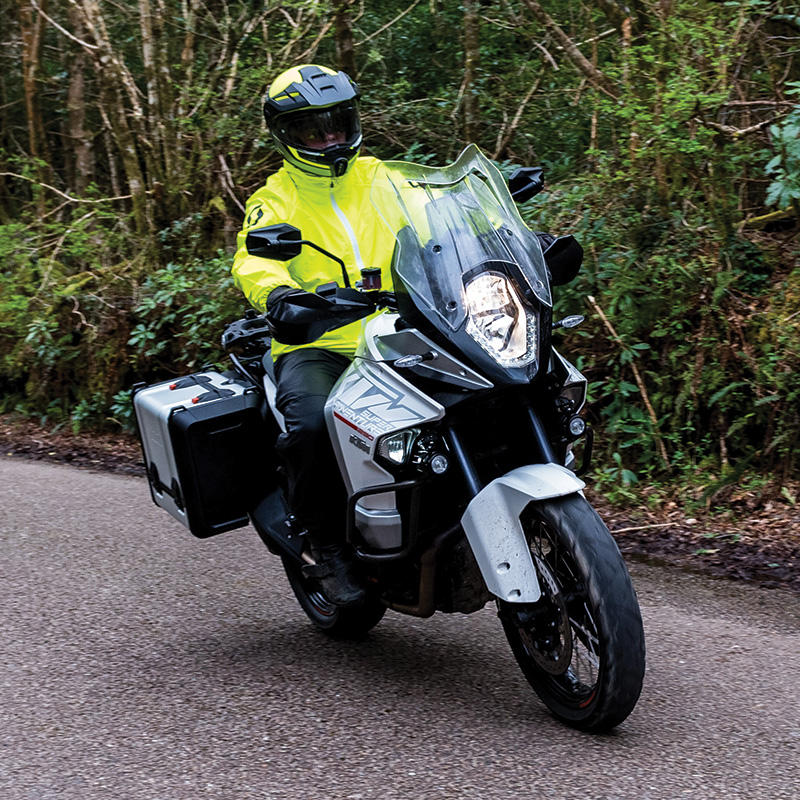
The final layer
Which leaves just one last layer. A waterproof one. And what has to be borne in mind is that a waterproof is most effective when worn on the outside. No rambler or walker ever put his waterproof inside his fleece! Think about it this way. Ride for five hours in heavy rain in your laminated Rukka jacket. At the end of the ride, the jacket may not have wetted out, but it will still be wet. Ride for five hours with a Scott waterproof over your Marrakesh, and at the end of your ride the jacket will be bone dry.
Pulling over to put on a waterproof over-jacket, for some bikers, is of course the stumbling block. But there’s no way around it. If you're adopting a layering approach, you will have to stop when it rains to put a waterproof layer on the outside.
And yes this can be an issue; especially if you're trying to work out whether what lays ahead is just clouds, or presages rain. You don't want to stop, and put your waterproof jacket on if the rain is not going to come. But by the same token, leave it too late, and you could get a soaking. We get it. But we don’t see this dilemma as an excuse for being uncomfortable on the bike for the 90% of the time when it is not raining.
For us, by the way, the waterproof will always be a Scott. We love our Scotts. They are stretchy, comfortable, totally waterproof, and more than sufficiently breathable. And as they come in tiny packages, they are easy to carry on the bike.
In conclusion
It is difficult to argue with the logic behind layering. Even to the most benighted of individuals, the case for layering is easy to buy into. But bikers are no more open to new ideas than any other group of diehards that has spent decades doing things a certain way.
For many, the whys and wherefores are irrelevant. If people have done things a certain way for so many years, how wrong can it be, they argue?
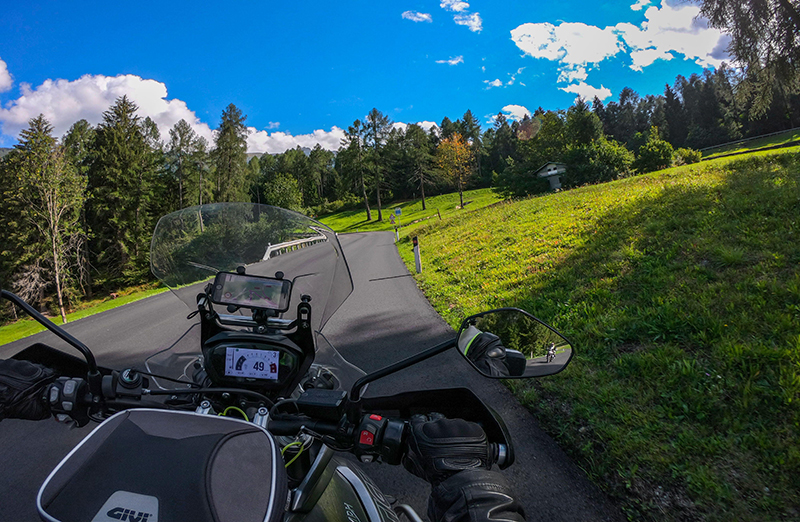
But the way we see it, layering is the only way to make sure that you're always comfortable on the bike. And if you’re comfortable that means you'll enjoy your riding more. And if you're enjoying your riding, and feeling comfortable, you'll ride safer too.
In our view, it’s the way to go!
You can buy the Klim four-season layering system with free next day UK delivery online, or visit our store in Guildford to try it all on.
Share this story
































































